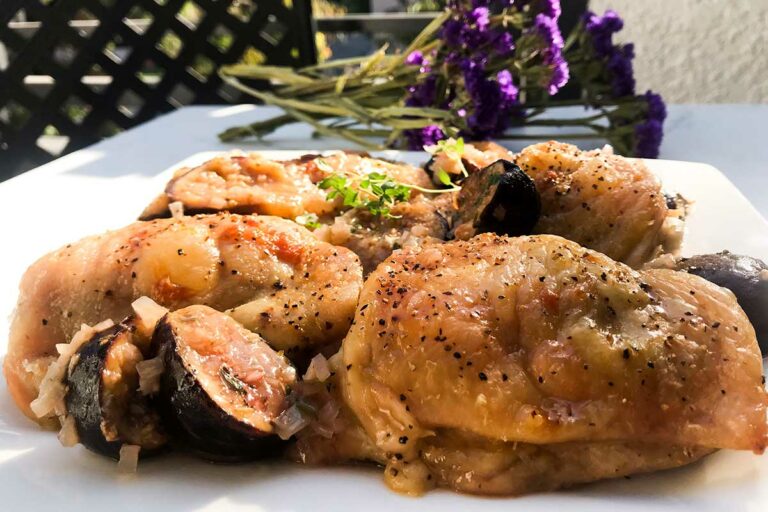
My Curated Tastes is reader-supported. When you buy through links on our site, we may earn an affiliate commission at no extra cost to you. As an Amazon Associate I earn from qualifying purchases.
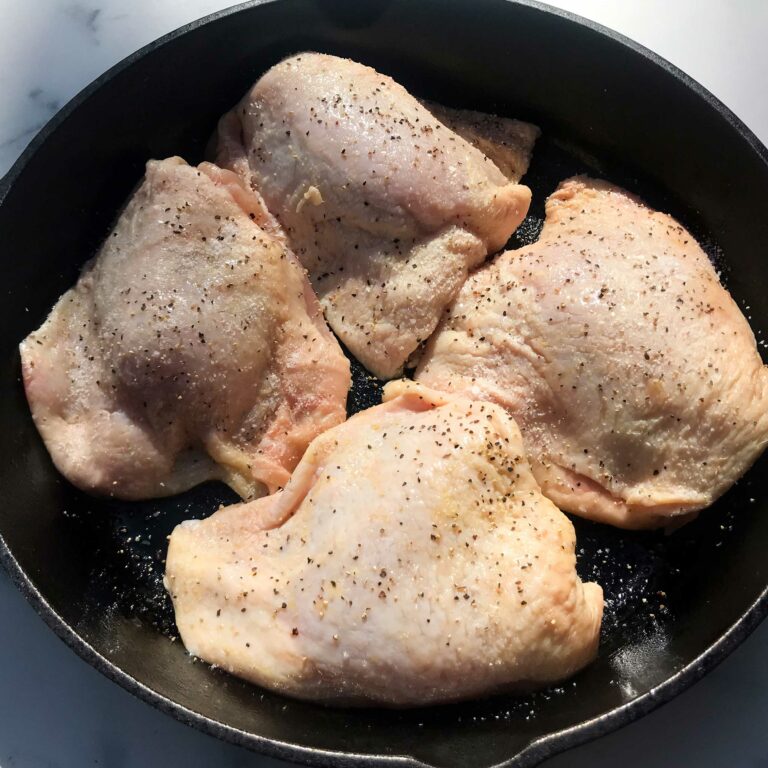
Frequently asked questions and answers about figs
- Breba Crop: This is the first fig harvest of the year and typically occurs in late spring or early summer. The breba crop is usually smaller and less abundant than the main crop and I rarely find any figs during this time.
- Main Crop: The main fig harvest typically takes place in late summer to early fall, depending on the climate where you live. These figs are the more abundant and widely available crop.
- Dates are the fruit of the date palm tree.
- They are typically elongated and have a wrinkled, brownish or reddish-brown skin.
- Dates are sweet, with a chewy, sticky texture.
- Dates are commonly grown in regions with hot and arid climates, such as the Middle East, North Africa, and some parts of California.
- Figs, on the other hand, are the fruit of the fig tree.
- Figs are generally pear-shaped or round, and they have a smooth, thin skin that can range in color from green to purple or brown, and that depends on the variety.
- Figs have a unique, sweet flavor and the interior contains small, edible seeds. (You remember Fig Newton cookies, don’t you?)
- Fig trees are cultivated in various parts of the world with suitable climates, including the Mediterranean, California, and some parts of Asia.
- Texture: Dried figs have a different texture than fresh figs. They are chewy and dense, whereas fresh figs are soft and juicy. If the texture is important to your recipe, I’d soak the dried figs in warm water or a flavorful liquid (such as juice, stock, wine, or brandy) for about 30 minutes to rehydrate them before using. This will help them become plumper and closer in texture to fresh figs.
- Quantity: When substituting dried figs for fresh figs, you’ll need to adjust the quantity. Dried figs are more concentrated in flavor and sweetness than fresh figs. As a general guideline, you can use approximately 2/3 to 3/4 cup of dried figs for every cup of fresh figs called for in the recipe.
- Sweetness: Dried figs are sweeter than fresh figs due to the concentration of sugars. (Think raisins vs. grapes.) You may need to reduce the amount of added sugar or sweeteners in your recipe when using dried figs.
- Liquid: If you’ve rehydrated the dried figs, the soaking liquid can add flavor to your dish – something to think about if you need moisture when baking or roasting veggies, etc.
- Flavor: Dried figs have a more intense and concentrated fig flavor. You decide if figs should be the predominant flavor in your recipe.
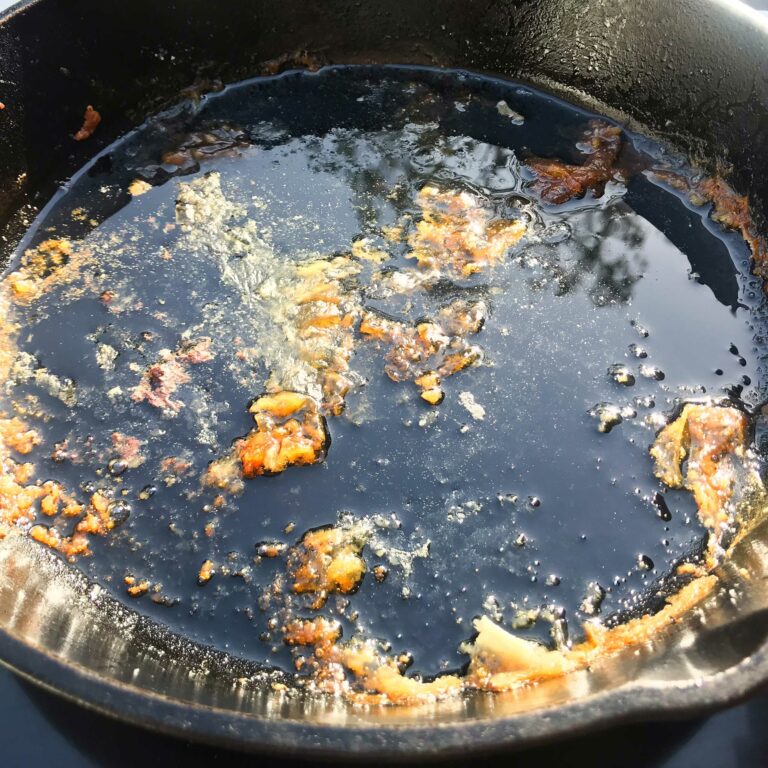
How to cook the chicken thighs
Now, to get started on this dish, prehat the oven to 410 degrees F. Place a large cast iron skillet on the stove over medium-high heat. Spray it with cooking spray first, then add a tablespoon of olive oil. Let it get real hot but not smoking.
Pat your chicken thighs dry with paper towels. Remove excess fat and skin. Liberally salt and pepper all sides of the chicken and place skin side up in the skillet.
Place in the oven and cook for about 30 – 35 minutes until golden brown and cooked through. The temperature should be 165 degrees F. when a thermometer is inserted into the thickest part of the thigh. Just note, cooking times can vary widely depending on your oven, so use the thermometer to be safe. No one wants to eat raw chicken. The good news? Chicken thighs are very forgiving and are very hard to overcook. Remove the skillet from the oven. Place the chicken on a plate and cover with foil.
Place the skillet on the stove over low heat.
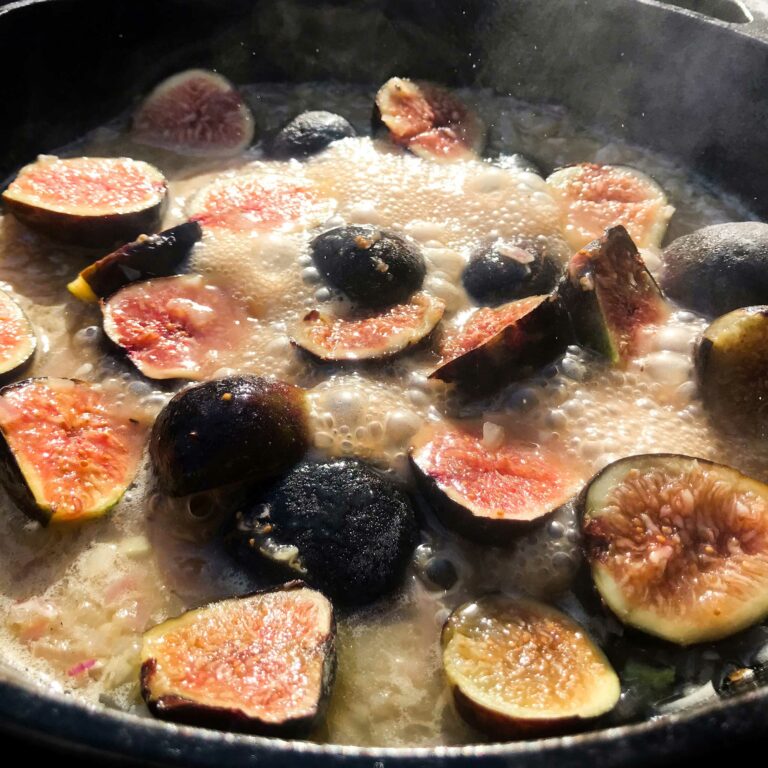
How to make the fig and thyme sauce
Add to the skillet the shallots, garlic, vinegar, stock and figs. Cook until the figs are warmed through and the liquid is reduced by a third. Add the butter, thyme and a pinch of salt and pepper. Taste. Adjust seasoning if needed.
Note: If you were using dried figs, I’d have them soaking in the stock for 30 minutes before making this sauce. That would plump them up and infuse the stock with fig flavor. Then, I’d just add the liquid and hydrated figs to the skillet.
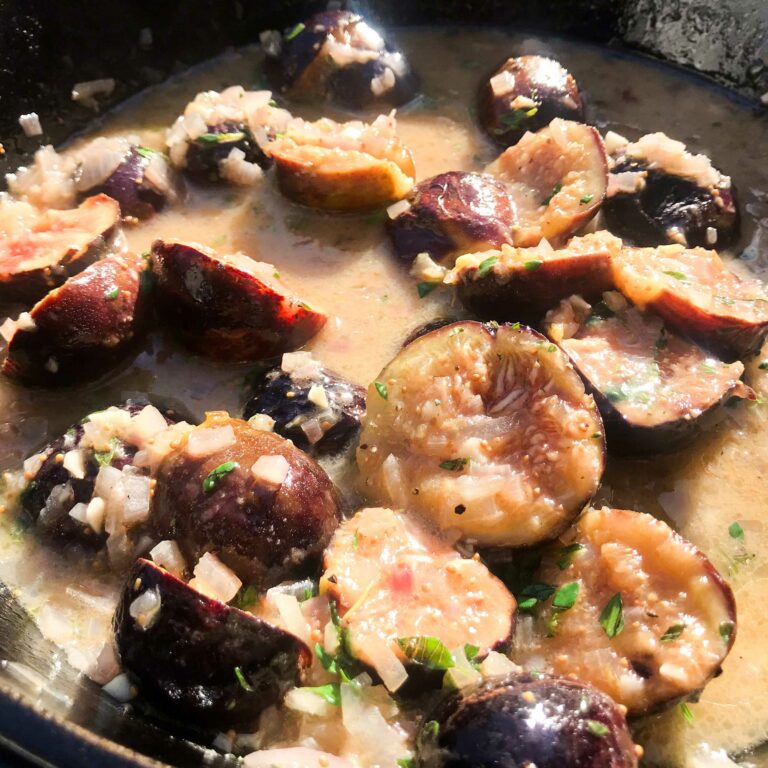
How to plate the dish
Place one or two chicken thighs on each plate. Depending on the size, one to two should be plenty per person. Spoon the figs and sauce AROUND the chicken (not on top of it). This will allow the chicken skin to stay crispy. This would be great served over a bed of rice or with a side of roast veggies and potatoes.
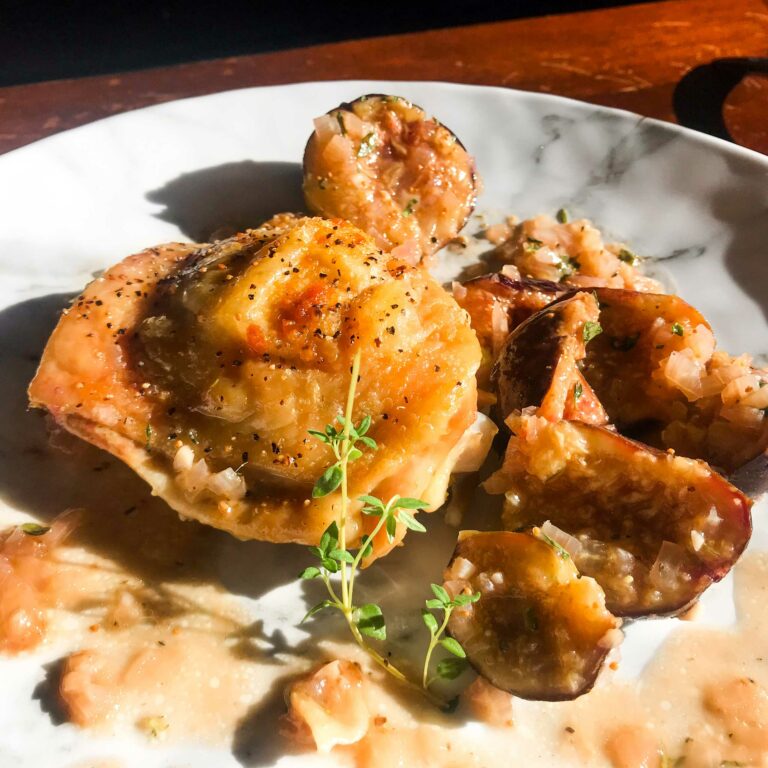
I hope you enjoy it. I love cooking with chicken thighs and just find them so flavorful. For other fast and easy chicken thigh recipes, try some of these:
Roasted Chicken Thighs with Sage, Mushrooms, Baby Potatoes, and Apples
Fried Dill Pickle Chicken Thighs
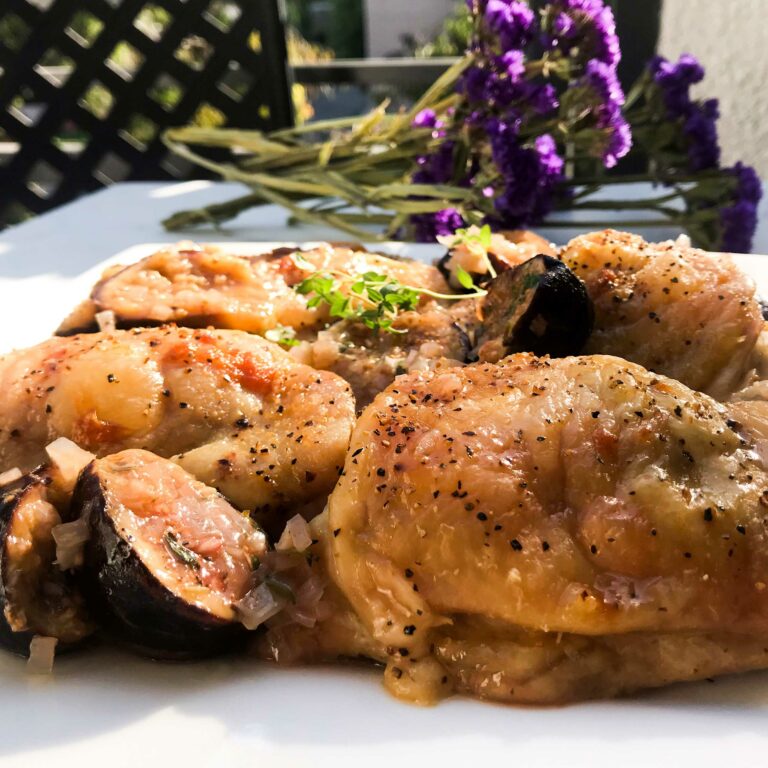

Chicken Thighs with Figs and Thyme
Nutritional information is only an estimate. The accuracy of the nutritional information for any recipe on this site is not guaranteed.
Ingredients
- 4 Chicken thighs skin on
- Cooking Spray
- 1 Tbsp. Olive Oil
- Kosher Salt and freshly ground black pepper to taste
- 1 Large shallot both sides, minced
- 2 Garlic cloves finely minced
- 3 Tbsp. Sherry vinegar
- 1/2 Cup Chicken stock
- 8 Oz. Fresh figs cut in half
- 1 Tbsp. Unsalted butter
- 1 Tsp. Fresh thyme leaves chopped
- Kosher salt and fresh ground black pepper to taste
Instructions
- Preheat the oven to 410 degrees F. Spray a large cast-iron skillet with cooking spray and add a tablespoon of olive oil.
- Trim the chicken thighs of excess fat and skin. Liberally sprinkle the chicken with salt and pepper. Add the chicken to the skillet skin side up and place in the preheated oven. Cook for 30 – 35 minutes until a meat thermometer reads 165 degrees F when inserted into the thickest part of a thigh and the skin is golden brown. Carefully remove the chicken from the pan and let it rest on a platter. Cover with foil.
- Place the hot skillet on the stovetop over low heat and add the shallots, garlic, vinegar, stock, and figs. Cook until the figs are warmed through and the liquid is reduced by one-third. Scrape up any of the brown bits from the bottom of the skillet and mix into the stock. Melt in the butter, add the thyme, and season with salt and pepper. Plate the chicken with the figs and pour the sauce around the chicken (To keep that skin cripsy, serve the sauce around the chicken not on top of it). Serve with your favorite sides like my Roasted Crispy Garlic Potatoes and Roasted Asparagus.






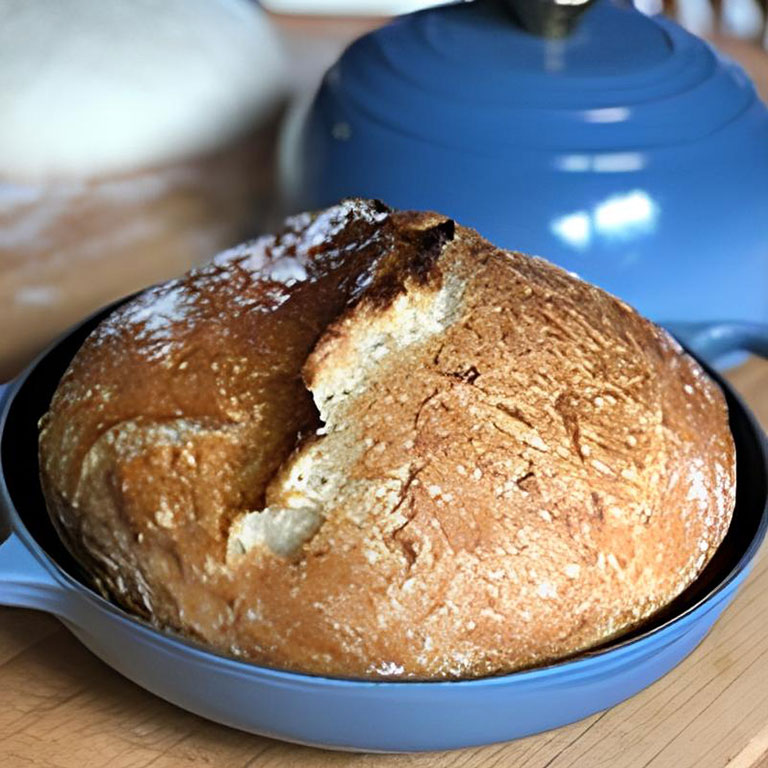




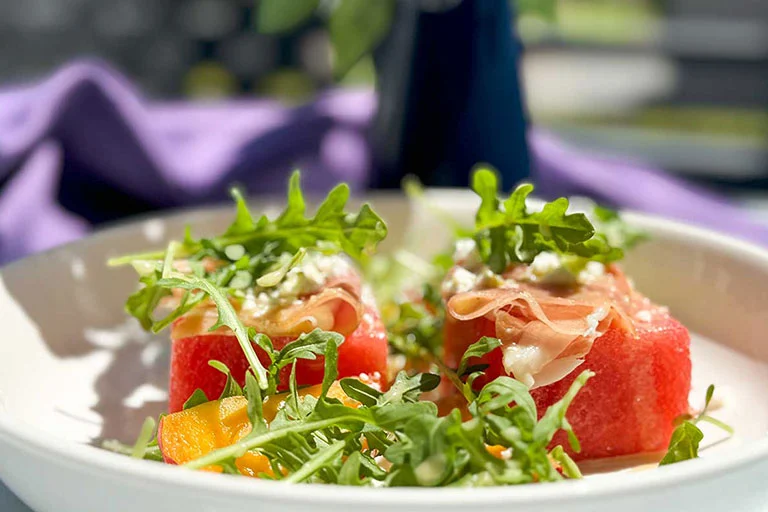
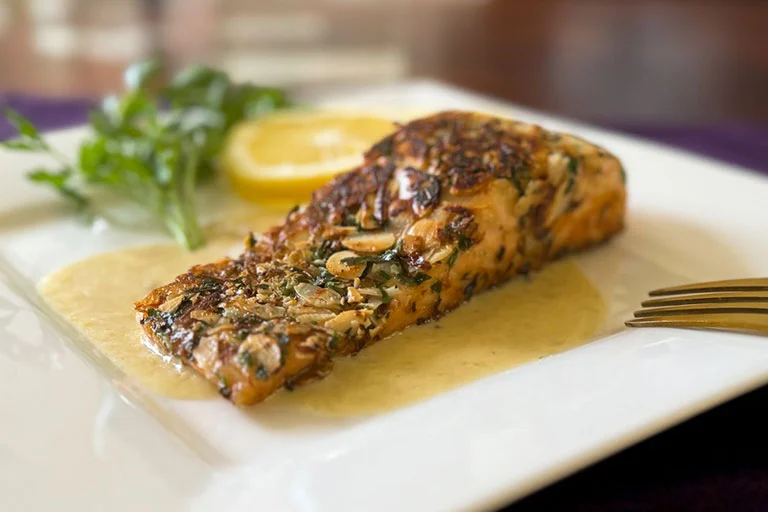




2 thoughts on “Chicken Thighs with Figs and Thyme”
This was amazing! I did have to use dried figs since there are no fresh right now, but I love any fig. The figs and thyme went together beautifully. I wondered what you thought of using fennel instead of thyme or both with the figs? Thanks for sharing this recipe. Just happened to come by for the chicken and pomegranate recipe and found this one instead. Now I have to try that one, too. LOL! Thanks again.
Dominique:
Glad to hear it worked with the dry figs…I’m a big fig girl too!(I like them in any form) Ooooh loving the fennel idea. If you try that, let me know how it turns out. Definitely try the chicken and pomegranate recipe (yup, hooked on pom too!!!!) lol I have a lollipop lamp chop recipe with pomegranates that’s a killer…check it out! Let me know1